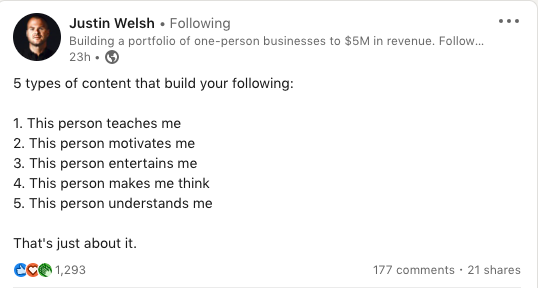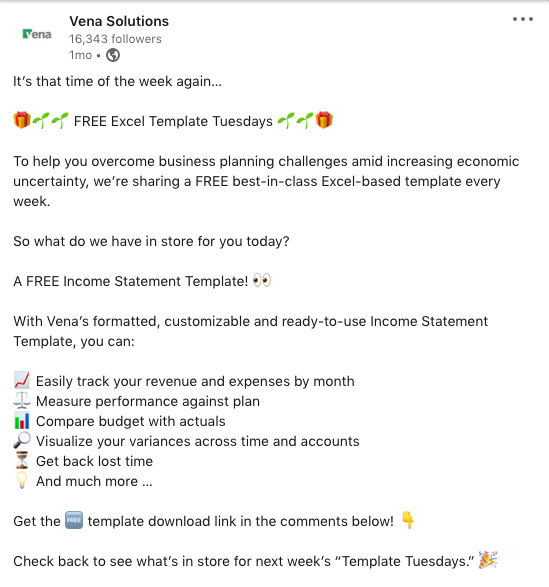We’re sure one of these scenarios rings true for your small company. You thought fundraising would be the hardest part, but it turned out it was a walk in the park compared to talent sourcing. Or you managed to land amazing first employees but then struggled with consistency of hires when you wanted to scale up from 5 to 50.
What sets the small giants apart from an average small company is precisely the way they built their brands and managed to attract amazing talent to fuel further growth.
In this guide, we’ll reveal the secrets of smart hiring for startups — how to find employees when you’re starting (or running) small.
But first, let’s map out the top hurdles stopping you.
1. Your employer branding could be improved
Mistake #1: you’re not thinking about employer branding because you think it’s too soon. In reality, this is one of the few things in business that can’t be done later, and, even more importantly, can’t be faked (word of mouth and brand awareness can come back to haunt you).
To be desirable as an employer (now and in the future), you need to engage your HR and marketing people to define your values, mission and vision, come up with a talent acquisition strategy, and build your workplace culture.
2. You don’t know how to get people excited
For people to be genuinely excited about joining your small company, you need to think of your value proposition as an employer, highlight your strengths and work to address the weaknesses.
How are you going to know what to pitch to prospective employees if you have zero knowledge of what sets you apart from the competition.
Exercise: Put yourself in your ideal employee’s shoes and ask yourself:
- How do I feel about this company?
- If I researched this company online, would I like what I found?
- If I researched employee reviews, would I like them?
- Why did I choose to work here?
The answers will be a good indicator of where to start.
3. Your HR team is small
Your HR team may be a one-person show. Even worse, you may have not hired your HR person yet. This means that your department heads or CEO are actually doing the head-hunting. That’s fine, but these guys already have their hands full, so talent sourcing often ends up on the back burner.
In other words:
- you’ll be slow
- your quality of hires will be lower, and
- you’ll be more likely to make a hiring mistake if you’re putting in the minimum effort.
4. You’re not sure how to find employees
You may have played around with LinkedIn, or written a job ad and shared it on your social media accounts. Still, you’re getting very few resumes, so the chances of finding someone with the right skill set, experience, and attitude is next-level difficult. You have no time or human resources to create any kind of concerted and orchestrated effort.
All in all, you’re either failing to find amazing employees or you’re confused about where to start.
How Can You Attract the Best Talent When You’re a Small Company?
Now let’s get to the bottom of this — here are our favorite tips for startup hiring:
1. Tell them a story on why they should work for you
When thinking about how to find employees and what you can offer them, make sure the candidates understand the amazing benefits of working in a small company.
Some of your potential hires may come from a different setting or a much larger company, and they could (mistakenly) believe that going small would be a step back. But in reality, there are many reasons why it’s better to work in a small company.
We can just easily forget them.
Or take them for granted.
Here are some benefits of working in startups and SMEs that you can leverage:
- Workplace culture — Small companies are BIG on living by their mission, vision and values. It’s easier to have a better work-life balance, as well as health care coverage. Prospective candidates will want to know what your day-to-day REALLY looks like and how it feels to be at work. So make sure your culture shows that. After all, atmosphere and personality are difficult to engineer.
- Flexibility — Smaller companies are waaaay more flexible, ambitious, and exciting to work in, with the whole team involved in various projects. This makes employees’ day-to-day lives more dynamic. Every single victory is a mini party! Plus, with all employees directly contributing, they feel more motivated and included.
- Wider tech stack — Every process, tool and activity is reviewed (and replaced) sooner. You may have started with Skype or Sococo for team calls and collaboration, but then moved to Slack and Google Meet. The same goes for email marketing systems, project management and CRM tools, or your Dev and Design team tech stack. Why is this good? Because your employees will be exposed to so many different tools that they’ll have zero issues later.
- Easier to get noticed — With fewer people around, it’s much easier to prove one’s worth and get noticed. Plus, managers have more time to get to know the employees’ strengths, discuss their career development, and help them choose the direction they wish to go in professionally.
- More flexible salary review process — Enterprises, multinationals, and Fortune 2000 companies typically have very rigid salary levels and review rules. On the contrary, salary ranges are way more flexible in SMEs and startups, with promotions and compensation linked to your career progression and performance rather than your geolocation and company profits. Don’t take this for granted, as it may play a deciding role when candidates are considering switching from a larger player.
- Accountability, trust, and skill set — In SMEs and startups, employees are never put inside a box. Quite the opposite, they’re always challenged to experiment and innovate (pretty much living outside the box). Since there aren’t multiple levels of management, employees are required to have a whole lot more responsibility and be fully accountable for the work they do. In practice, this translates to a wider skill set, more independence and satisfaction for your potential hires.
- Camaraderie and collaboration — In large organizations, it’s not uncommon for members of the marketing team to have never talked to someone from Product. In smaller companies, the team is much more compact and everyone works with everyone. For example, a copywriter may work on Marketing tasks, but also provide UX copy for the Product, work with Sales to design email campaigns or create decks, and also touch base with Support to improve technical documentation. It’s a clear win-win because people are more connected across departments.
Pro tip: Don’t be afraid to approach Seniors. They, too, could be bored out of their minds with corporate rules, lingo, and processes. Many of them will jump at the opportunity to be Team Leads and be given the chance to build their own teams. Even if you have a limited budget for these hard-to-fill roles, don’t panic — MANY candidates (especially millennials!) are happy to move to a smaller company and lower pay if they’ll be doing meaningful work that makes them happy.
Here’s how some of our LinkedIn network members look back to their choice of a smaller company:
“There are SO many reasons why I chose a startup after a large multinational. First — there’s more challenges and more freedom. Next, all decisions have to be made super fast. It’s also much faster to get people to approve my work or provide feedback. Since everyone’s juggling multiple roles in a startup, that matches my personality perfectly… I don’t like being in a rut.”
“Initially, it was the product, the flexibility, and the ability to work remotely. What really sold me though was the integrity I saw in the interview process. They paid me for my writing sample (huge for a writer and sadly not all that common) and had just made the determination not to use Google Ads on the site because, as the CEO said, “it felt scummy.” I knew any business that put integrity before profits was a place I wanted to work.”
“I love the direct and almost instant communication with the executives and the whole team when help is needed. In small businesses, if you have an idea, it’s much easier for it to get implemented and there’s a whole lot less red tape.”
“To me as a first-time mom, the flexible work arrangements and scheduling really mattered initially. Later, I realized that I love making an impact and being more visible. My hard work is really noticed, and I wouldn’t have that satisfaction had I stayed with my previous employer.”
2. Use your entire team as recruiters
When you have an amazing core team, chances are these folks hang out or have previously worked with some other equally amazing people. So if you’re not sure how to find employees, your team members’ own networks are great. After all, nobody knows your hiring needs, technical requirements, and workplace culture better than your team.
Here’s how you can organize this process.
Once you have the job description ready, share it with your team first. Don’t share it on job boards at this stage. Rather, give your team a week or so to comb their own networks and see if there’s anyone they know who fits this role. Also, motivate them further by providing a referral bonus (more about that in section 6).
3. Start building your brand on LinkedIn
What’s the best way to share your mission, values, and milestones that will also do wonders for your brand and team?
One word, friends. LinkedIn.
It’s the world’s largest professional network and a job seeker’s first stop when evaluating you as an employer. So what can you do on LinkedIn to attract more candidates to apply?
Show them who you are and how you’re killing it at work.
- Create your company page where you’ll post updates, share industry news, ask questions, and show the human side of your business by sharing what’s going on behind the scenes. Show how you embody your values and how you make work meaningful and fun. Some great examples are Gong, Patagonia and Lead Delta.
- If you can’t afford a LinkedIn Recruiter seat to propel your talent acquisition strategy, you can create your own lists of interesting profiles and approach these people manually.
- You should join the relevant industry conversations in LinkedIn groups. It’s where many job seekers and recruiters can cross paths in a less formal setting. You can try the Small Businesses and Self-Employed Group, or, if you’re a startup, check out the Startup Specialists Network.
- Have your A-listers post regularly. Everyone on your team has a story to tell and prospective employees love a good inside story. Even better, give some real-life advice that resonates with people or share your two cents on a topic that matters to you. Here’s an example we love:
- Encourage and support your team members to be active on their personal profiles and help build your company brand in the process.
- Share your expertise by organizing workshops, webinars or sharing free templates, like this one by Vena Solutions.
4. Know where your dream candidates are
When I was negotiating my content writing job with Skillful, (my now manager) Vuk got in touch with me through LinkedIn. And then I went MIA. Not because I stood him up, but because, like a true Xennial, I wasn’t checking LinkedIn daily. Not even once a week.
Did he give up? No. He sent me an SMS instead.
How exactly is this a lesson in talent acquisition strategy?
You need to know your ICP and the exact neck of the online woods where these people are. It could be GitHub, Behance, TikTok or an obscure subreddit. There’s more info on how you can tap into those communities and where to look for which roles in this guide on creative candidate sourcing strategies.
5. Offer outstanding benefits
The pandemic took away some of the once-cool benefits so we can safely say that the days of the office beer fridge are gone.
But don’t despair, there are dozens of other cool benefits you can offer to attract more employees to apply (and stay), most of which won’t break your bank. Here are some examples we love:
- Health insurance and mental health support — This is a no-brainer. Applicants believe medical coverage to be the #1 benefit in your employment package. Extra points if you provide any kind of mental health support. If you want to throw in something extra, yearly subscriptions for apps like Headspace or Balance could be a good idea.
- More days off — Again, no brainer. Your team is working hard, so it’s nice to give them time to play hard or rest hard too. Think about adding some extra days on their birthday or loyalty PTO after they’ve been with the company for a few years.
- Focus on family — Extended parental leaves for both mom and dad, financial support, or extra time off for employees caring for a sick family member.
- Professional development — There are so many courses to choose from on Coursera, Udemy, LinkedIn Learning, or Masterclass. Go crazy and encourage your folks to choose courses that go beyond what they need for their immediate professional development!
- Flexible working hours — People are most productive on their own terms and at different times. Allow your folks some async work and, with the right tools to support you, your team will be thriving. Happiness score 100!
- Birthday gifts — A little personalization can make someone’s day. If your PM is into reading, get them a Kindle, a Medium membership, or something from their Book Depository list. Your geeky marketer obsessed with Legos? Think Mandalorian the Child or Friends Apartment limited edition. A friend of mine is still raving about a turntable he got for his birthday 7 years ago.
- Vouchers — A bit less personalized, but still cool. You can go with the good old Amazon gift card or maybe something more exciting like Flight Gift, AirBnb, or an annual National Parks pass.
- Home office budget — If your team’s working remotely, why not help them create a space they’ll love?
Need more cool ideas? How about:
- gym or yoga class memberships
- loyalty, performance, or vacation bonuses
- student loan paydowns
- charity donations
- pet-friendly offices
- fun card games like Esther Perel’s Where Should We Begin, We’re Not Really Strangers or Cards Against Humanity
- tickets for sport events like the U.S. Open, baseball games, or Formula 1
- vacation budget
- …and if they’re really missing the beer fridge, you can always send a pack of 12 assorted beers to their door.
6. Hire interns, part-timers, and freelancers
If your budget is limited or if you’re struggling to find candidates who’ll work full time, that’s okay.
You may also have commitment issues — you know, wondering if that full-timer is exactly the hire you need. You can bridge that gap by hiring consultants, contractors, freelancers, part-timers and offering internships.
Why does this work?
Your part-timer may fall in love with your product, workplace culture, and team and end up a full-timer before you know it.
Freelancers are quick, experienced, flexible and independent — precisely what you need if you’re small and need help with your own direction.
Here’s where you can find them:
- All kinds of freelancers: Upwork, Toptal, Fiverr, Guru, YunoJuno, Freelancer, AngelList Talent, We Work Remotely
- Designers: Behance, 99Designs, Dribble, DesignHill, Design Crowd
- Developers and Web Developers: GitHub, Webflow Experts
- Content Writers: iWriter, Crowd Content, Scripted, Content Writing Jobs
You can also consider partnering with universities to build your talent pool.
7. Hire for attitude rather than skills
Finally, don’t forget that technical skills can be learned and perfected — A good copywriter with no experience in writing ads CAN learn the rules and tools (and unleash their creativity). What they can’t learn is warmth, collaboration, a growth mindset, attitude, and likeability.
Or you can have the best backend developer in the company, but lose 5 other developers who are sick and tired of his attitude and lack of respect.
If things work out for your small company, things may evolve quickly and everyone will need to learn new skills. That’s why it’s best to focus on behavioral interview questions when talking to candidates and pay extra attention to the things you can’t train.
Final Thoughts on How to Attract Employees
While some talent sourcing strategies work for everyone, finding and securing top talent for SMEs and startups comes with unique challenges. To overcome them, you need to:
- start from your own backyard and know exactly what you’re offering
- believe in your own story so that you can sell it to future employees, and
- diversify your candidate sourcing strategies
Before you go, you can hop over to our guide on 10 creative candidate sourcing strategies that work for small businesses too (it covers social sourcing and lists relevant communities for most roles).







